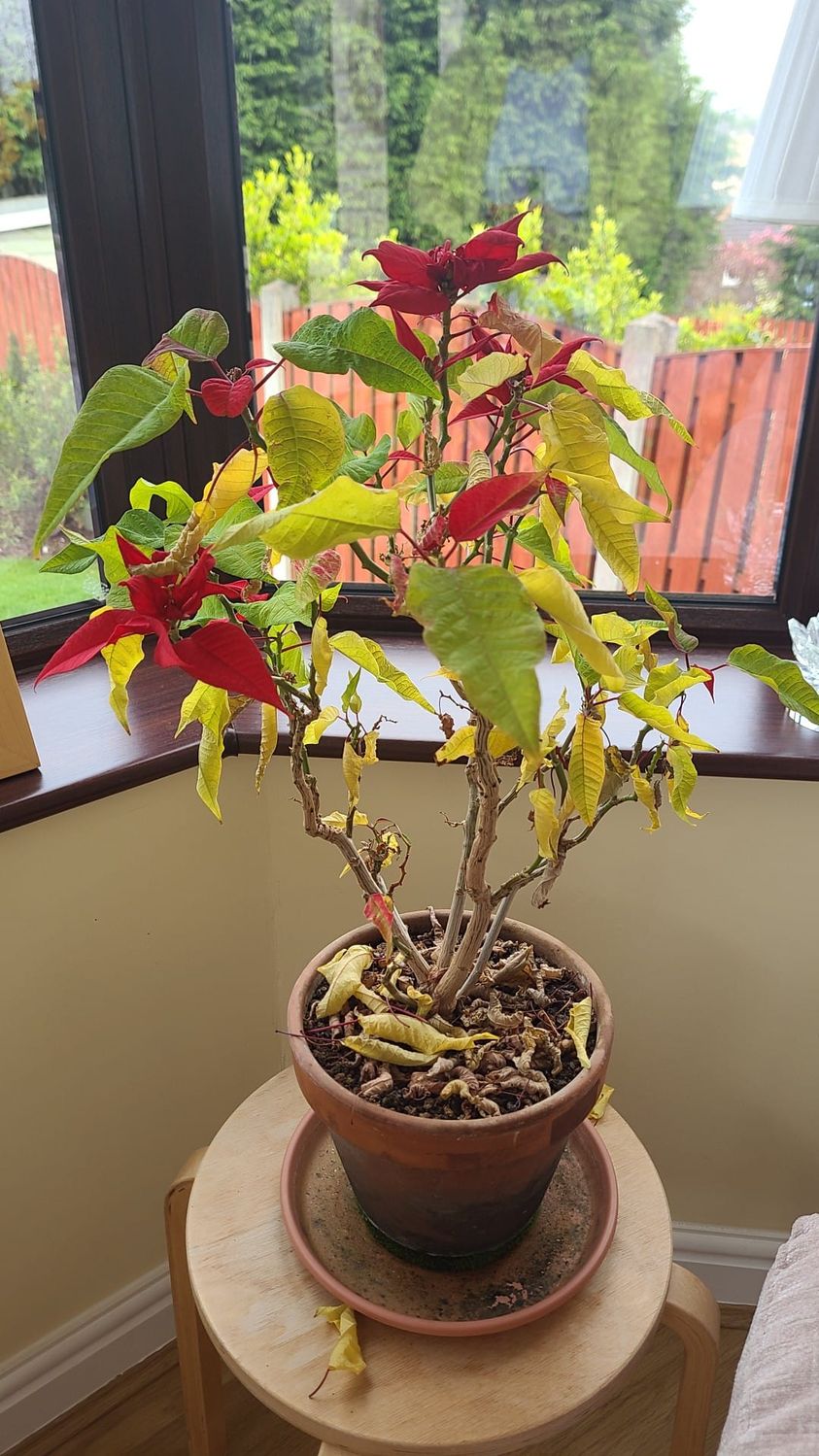Do you wish to learn the secrets of keeping your Poinsettias thriving and vibrant throughout the year? Start with the most crucial aspect: watering!
Consider this article if you want quick and failproof watering tips to save your Poinsettia throughout the winter.
Table of Contents Show
Underwatering and Overwatering Symptoms in Poinsettia
As Poinsettias struggle to survive in overwatered conditions, keeping the soil dry is better than making it soggy.
However, the underwatering symptoms may also be as harmful as overwatering.
| Overwatered Poinsettia | Underwatered Poinsettia |
|---|---|
Leaves turning yellow |
|
Falling leaves |
|
| Drooping or wilted leaves | Shriveled leaves |
| Stems and leaves turning mushy | Burnt leaf edges |
| Root rot | Slow flowering |
Since most of the signs of overwatering and underwatering are the same, frequently check the soil. If the soil is too dry, those symptoms are due to insufficient water.
How Often to Water Poinsettia?
The watering needs of the Poinsettia are affected based on factors including location, temperature, moisture, and soil you offer.
Ideally, Poinsettia requires 50-75% humidity and 65-70°F temperature and at least 6 hours of indirect light for healthy bloom.
In this environment, you can water your Poinsettia weekly. However, if you grow the plant outdoors, water it every 1 to 3 days because high temperature dries the soil quickly.
In winter, be careful if you are growing Poinsettia indoors, as heaters and dry air may dry up the soil they are thriving upon.
So, you need to check the upper soil with 1-2 inches dry to water Poinsettia.
Or you can use a moisture gauge to prevent accidental overwatering or underwatering of the plant.

Usually, for a 6-inch pot, you should water 12 fluid ounces, and 20 fluid ounces is enough for an 8-inch pot.
Besides, consider the Poinsettia’s age and size with the following tips to water frequently.
- If you have newly propagated or young Poinsettias, mist them using a mister or spray bottle instead of watering them.
- You can water the plants normally after transplanting them into a new container.
- Let the soil dry between the waterings.
- Do not water if it is raining.
How Should you Water Poinsettia?
Poinsettia is more than happy when it gets slightly moist, so never make the soil soggy or dripping wet.
Method 1
Pour water slowly from the top of the soil until the excess water drains away from the draining holes.
Instead of taking water near Poinsettia, it will be easy to take the plant near the sink and water it evenly.
When the water drains off, place the pot in the plate or saucer and frequently remove the excess water collected there.
Method 2
Apply bottom watering method, but we recommend you follow it only when the soil is dry to stone.
Allow your Poinsettia to soak the water from drainage holes by placing the pot into the water-filled saucer.
When you get Poinsettia wrapped as a gift, discard the excess water collected in the foil or let the water drain off the foil. Otherwise, your plant may face root rot or turn yellow due to poor drainage.
To serve your Poinsettia with even watering, place some ice cubes on the upper surface of the soil. Slow ice melting helps the plant soak water evenly without any problems.
You may water your Poinsettia in a dark place, but remember to water it only when the soil feels dry to avoid overwatering.
From Editorial Team
Think Before you Water your Poinsettia
Always provide your Poinsettias with filtered or rainwater, as tap water may contain various chemicals degrading your plant’s growth and blooms.
Remember to mist your plant in the morning, as it provides tropical conditions to boost flowering.
Also, reduce watering once the colorful petals fall off.


